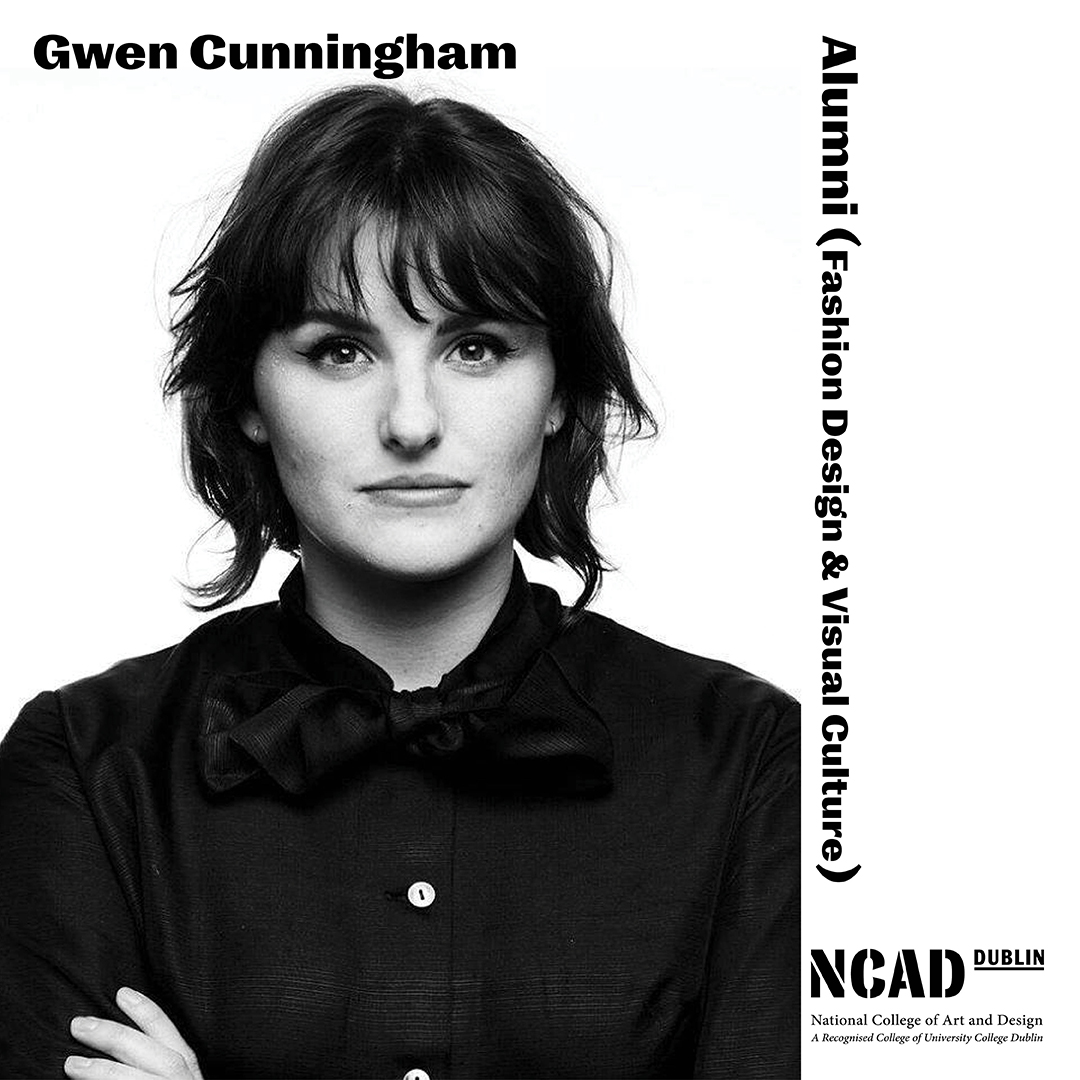Alumni Stories - Gwen Cunningham
I followed a joint honours programme in NCAD, combining fashion design with visual culture. This dual education satisfied both my mind and my hands, and allowed me to take a critical, objective look at the industry.
Name: Gwen Cunningham
Current Career:
- Circular Textiles
- Programme Lead for Textiles at Circle Economy
- Sustainability Coordinator and Lecturer at the Amsterdam Fashion Institute
Graduation Year: 2014
Discipline: Fashion Design and Visual Culture
Location : Amsterdam

What career path did you want to follow as a child?
I was a notorious letter writer and diary owner. And I remember being envious of the solitary, hermetic life of the nuns in the convent near my house.
Why did you decide to study at National College of Art & Design?
I changed my mind up until the last minute, jumping between it and a thousand other things. I worried that my more academic side would not be satisfied if I attended an art college. I worried that my more creative side would not be satisfied if I didn’t.
Ultimately, I think I chose it because it scared me a little, and so I thought it must be worth doing.
How did you develop your career towards your current practice?
The day after graduating, I moved to the Netherlands, the ‘circular hotspot’ of Europe. Within months, I started interning at Circle Economy’s Textiles Programme and was hired six months later as a researcher and analyst for the Fibersort project. We were, together with partners, building a technology that automatically sorted large volumes of mixed post-consumer textiles by fibre type. Once sorted, these materials could become reliable, consistent input materials for high-value textile to textile recyclers – allowing textile waste to be transformed into new textiles. It was very different to what I had been trained for, but I loved it.
In 2016, I became the Lead of the Textiles Programme. Today, we have the mission to achieve a zero waste textiles industry. We do this by connecting a circular supply chain of producers and solution providers in order to 1.) build the data, technology and infrastructure needed to valorise textile waste at end-of-life, and 2) train and support apparel brands and educational institutions to adopt circular design strategies and circular business models.
During my first year in Amsterdam, I was approached by the Head of Design at the Amsterdam Fashion Institute. Their sustainability coordinator and lead lecturer was retiring, and they wanted to build capacity in the field of the circular economy. I always had a big interest in education, and was excited by the opportunity to ensure that all the new knowledge and insight that I was developing in my role at Circle Economy, would be passed on to future generations of fashion professionals. Today, I continue to divide my time between both roles.
What is the one experience – during your time at NCAD – that has informed you most in your work to date?
I followed a joint honours programme in NCAD, combining fashion design with visual culture. This dual education satisfied both my mind and my hands, and allowed me to take a critical, objective look at the industry. I realised that I didn’t like what I saw; a system for producing, distributing, using and disposing textiles and clothing that operates in an almost completely linear, take-make-waste, manner.
My final year thesis, explored alternative economic models for the fashion industry. I didn’t realise it back then, but I was describing a circular textiles industry. My work, ever since, has the aim of turning that vision into a reality.
If you were chatting with current NCAD students today, what is the one piece of advice you would offer?
For those in the field of design, I would ask – what do you want to achieve through the items you create? What is your purpose as a designer? What problem are you trying to solve?
Given the global turmoil and change, accelerated by the COVID-19 pandemic, what – in your opinion – are the opportunities for those in creative industries?
Constraint drives creativity. It is the role of the designer to imagine, and draw pathways towards alternative future scenarios. Use your creativity to solve the social and environmental challenges that we are faced with right now. And start by immersing yourself in the uncomfortable ambiguity of the challenge you are trying to solve – embrace the problem-space first.
Portfolio Links:
https://www.circle-economy.com/
Find out more about studying at NCAD
Follow NCAD
NCAD Twitter @NCAD_Dublin
NCAD Instagram @ncad_dublin
NCAD Facebook @NCAD.Dublin
